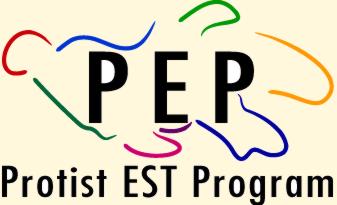
Bioinformatics tools developed in the context of PEP
Page Links:
TreeBlaster
PhyloWiz
CrossBlaster
Sliding Window Programs
AutoFact
AnaBench
Conditions of Use
Contact
Tools for
organelle
genomics
Stand-Alone Tools:
TreeBlaster
- Program Description:
An all in one web-based multiple alignment and phylogenetic tree
builder. The input is a single sequence and allows the user to
eventually construct a basic phylogenetic tree. The tool works by
blasting NCBI databases and then adding buttons to each BLAST hit
returned. These buttons allow the user to run iterative BLASTs using the
BLAST hit as input, and to save the BLAST hits as sequences to a growing
multiple alignment file. When a multiple alignment file is complete,
the user proceeds to the tree-building phase that pipelines the
sequences through ClustalW, puzzle, weighbor, and consense to build a
basic phylogenetic tree.
- System Requirements: CGI
script capability, perl, unix OS (including a "/tmp" directory), web
browser, and locally installed phylogenetic software (puzzle5, clustalw,
consense, weighbor, )
- Download
PhyloWiz
- Program Description:
A command line program that starts with files in nexus format and
creates phylip files containing user-defined subsets of characters and
taxa, and then does some automated phylogenetic analyses. The user
inputs names of nexus files and names of taxa lists to include or exclude
from the analysis. Character sets or exclusion-sets are read from the nexus files
and directories are created grouping nexus files together by use of
common character sets and taxa lists. Phylogenetic analyses are then
performed on some or all of these newly created files. The options for
phylogenetic analyses are distance analysis
(puzzle->fitch->weighbor->consense), distance bootstrapping
(puzzle->fitch->seqboot-> puzzleboot), and ML analysis
(puzzle->pmbml->phyml).
- System Requirements:
perl, interactive shell, unix OS or Mac OS X, and locally installed
phylogenetic software: puzzle5, consense, clustalw, weighbor, fitch,
paup4.0, puzzleboot, seqboot, pmbml, and phyml. NOTE: It is possible
to use other parts of the program without all software installed!
- Download
CrossBlaster
- Program Description:
A web-based program for running iterative BLASTs on any two local data
sets of sequences. The user inputs up to five directory names, each of
which contains FASTA sequence files which will serve as BLAST inputs.
Either these directories must contain only sequence files, or all
sequence files must have a common prefix that is provided to the
program. For a database to BLAST against, the user either inputs a
concatenated FASTA file or else the names of directories containing
FASTA sequence files that are used in creating the database to BLAST
against. The output of the program is a webpage containing a table
summarizing the BLAST data. The table contains three columns: input
sequence name, name of top hit (with a link to the BLAST output), and
E-value.
- System Requirements:
CGI script capability, perl, unix OS (including a "/tmp" directory),
blastall and formatdb software installed locally, and a web
browser
- Download
Sliding Window Programs:
Amino Acid Frequency
- Program Description:
A command-line program that performs a sliding window analysis on amino
acid frequency. The program works by taking in a file with any number of
concatenated FASTA sequences and calculating the amino acid frequency
over all possible windows for each FASTA file. The user inputs the filename,
window size to use, and amino acid to search for
- System Requirements:
perl, interactive shell, and unix OS or Mac OS X
- Download
Kyte-Doolittle Hydrophobicity Averages
- Program Description; A
command-line program that performs a sliding window analysis by
calculating average Kyte-Doolittle hydrophobicity value for each window.
The program works by taking in a file with any number of concatenated
FASTA sequences and calculating the average Kyte-Doolittle over all
possible windows for each FASTA file. The user inputs a filename as well
the the sliding window size to use.
- System Requirements:
perl, interactive shell, and unix or Mac OS X
- Download
Consensus Sequence Finder
- Program Description:
A command-line program that performs a sliding window analysis by
searching for any matches to a consensus sequence that are above some
cut-off percent. The program works by taking in a file of FASTA
sequences and a file with the consensus sequence, and the cut-off
percent to be considered a match. The consensus sequence may contain any
of the amino acid symbols as well as {o, l, '.' , '+', a, c, h, '-', s,
p, u, t} -> the meaning of each symbol is included in the README
file.
- System Requirements:
perl, interactive shell, and unix or Mac OS X
- Download
AutoFact
-
AutoFACT is a program that analyses nucleotide and protein sequence data, deriving informative functional descriptions by combinining multiple BLAST reports from a selection of databases. AutoFACT assigns functional information, enzyme clasees, and Gene Ontology terms where possible. For more information, consult the AutoFACT homepage.
- Download
AnaBench:
AnaBench is a web-based platform providing integrated access to a wide range of sequence analysis tools, allowing for sequence comparison, multiple alignment, motif indentification in nucleotide and protein sequences, primer definition, and other forms of sequence analysis. Users may establish private workspaces on the AnaBench server where they can store data, run analyses and store the results. AnaBench is primarily implemented in Java, and makes use of related technologies such as CORBA and JSP, as well as relational databases for information management. AnaBench may also be downloaded for local installation. For further information, consult the AnaBench homepage.
Conditions of use:
- All software is distributed "as is" and comes with no
guarantees
- Users are free to modify the software provided credit is given
Back to Evolutionary Genomics
at the Université de Montréal
